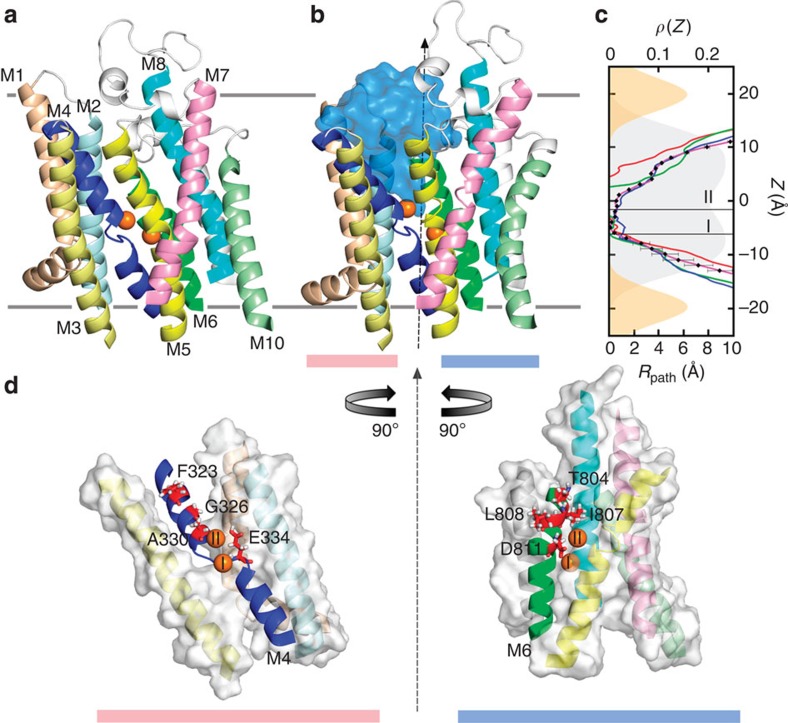Mechanism of potassium ion uptake by the Na(+)/K(+)-ATPase
By Juan P. Castillo, Huan Rui, Daniel Basilio, Avisek Das, Benoît Roux, Ramon Latorre, Francisco Bezanilla, and Miguel Holmgren.
Published in Nat Commun. 2015 Jul 24;6:7622.
PMID: 26205423. PMCID: PMC4515779. Link to Pubmed page.
Project: Conformational Transitions in P-class ATPases

Figure 5. Extracellular occlusion–deocclusion of the Na+/K+-ATPase in the presence of bound K+.
Abstract
The Na+/K+-ATPase restores sodium (Na+) and potassium (K+) electrochemical gradients dissipated by action potentials and ion-coupled transport processes. As ions are transported, they become transiently trapped between intracellular and extracellular gates. Once the external gate opens, three Na+ ions are released, followed by the binding and occlusion of two K+ ions. While the mechanisms of Na+ release have been well characterized by the study of transient Na+ currents, smaller and faster transient currents mediated by external K+ have been more difficult to study. Here we show that external K+ ions travelling to their binding sites sense only a small fraction of the electric field as they rapidly and simultaneously become occluded. Consistent with these results, molecular dynamics simulations of a pump model show a wide water-filled access channel connecting the binding site to the external solution. These results suggest a mechanism of K+ gating different from that of Na+ occlusion.




